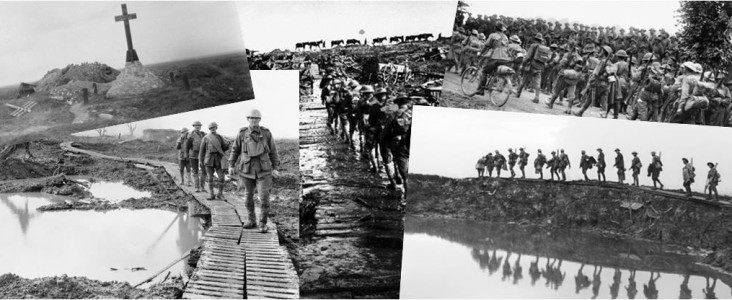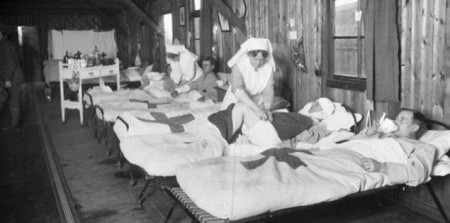History of the Western Front
The Western Front Campaign is often said to be one of the darkest periods of the First World War.
In March 1916, after Gallipoli, the ANZACs (Australian and New Zealand Army Corps) were sent to France to the conflict on the Western Front, where the war was bogged down in trenches and mud.
The first major engagement for the AIF on the Western Front was at Fromelles on 19 July 1916 – with 5,533 casualties it is considered to be the worst night in Australian military history. The assault to retake Pozieres by the AIF commenced shortly after midnight on 23 July and over a six week period, there were over 23,000 casualties.
In proportion to forces fielded, Australia’s casualty rate was almost 65 per cent – the highest in the British Empire. One of the reasons for this was that Australians were exposed to the front line in massive numbers, partly because of the reputation for action forged at Gallipoli. The average life expectancy in the trenches was about six weeks, with junior officers and stretcher bearers being among those most at risk.
Between 1916 and 1917, little gain was made by either side. In early 1918 the German army launched a massive offensive to break the stalemate, however between April and November 1918, the allied forces combined infantry, artillery, tanks and aircraft more effectively and finally gained ground. Germany surrendered on 11 November 1918.
During the course of the First World War, almost 60,000 Australians (nearly all men) died after sustaining injuries or illness. 46,000 of these deaths were on the Western Front. A further 124,000 were wounded (sometimes multiple times) and as a result, these men endured years of ill health, disfigurement or disability. Australian army nurses also caught trench diseases like dysentery, measles, typhus, influenza and mumps.
Australians who died on the Western Front are now remembered in over 500 cemeteries and memorials that stand amidst peaceful farmland and on the edges of small villages where the battles once raged.
11,000 of these Australians have no known grave.







